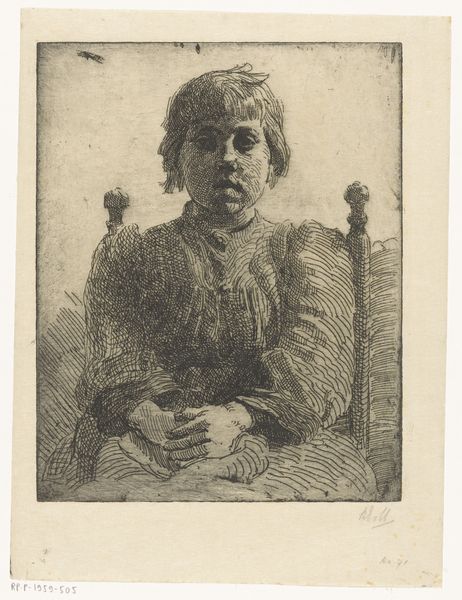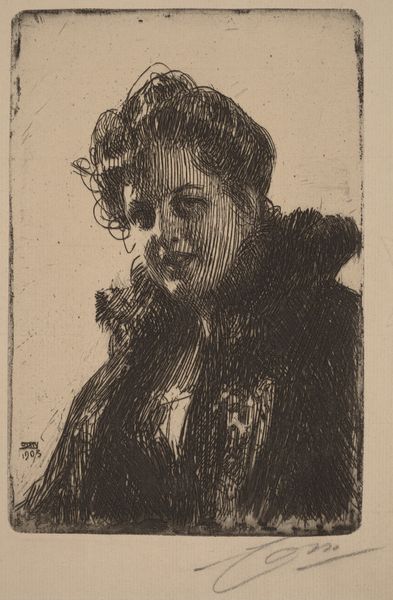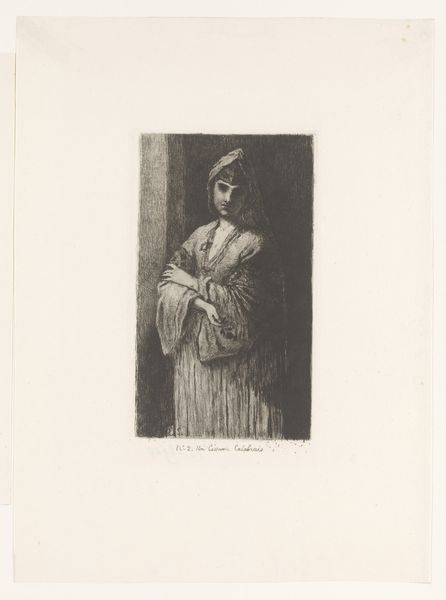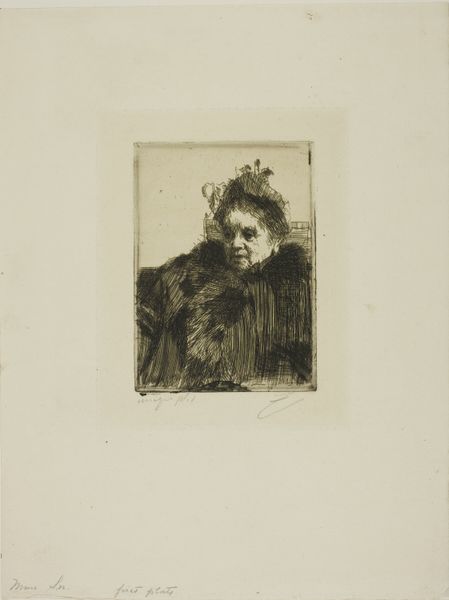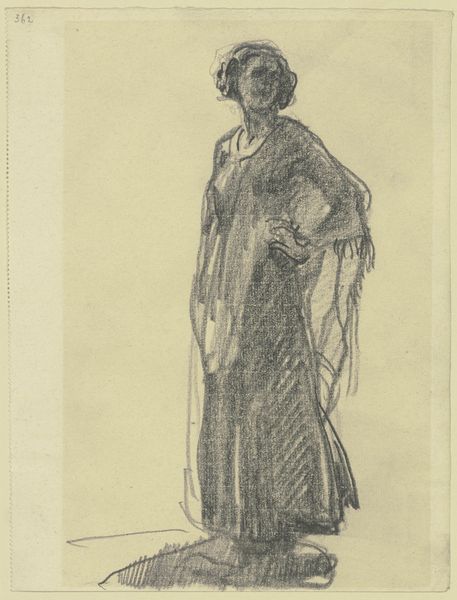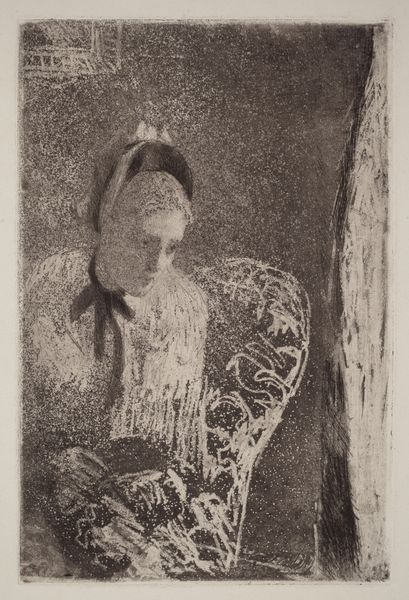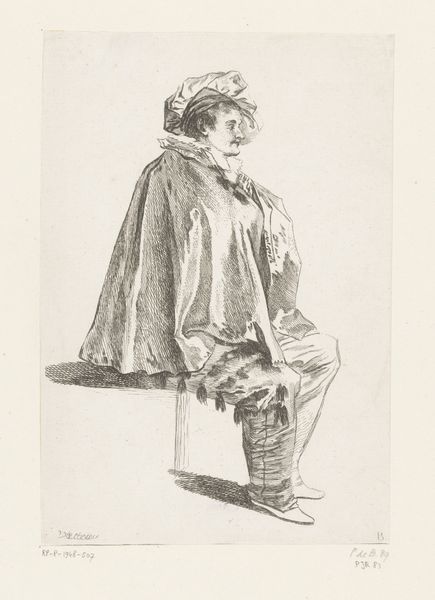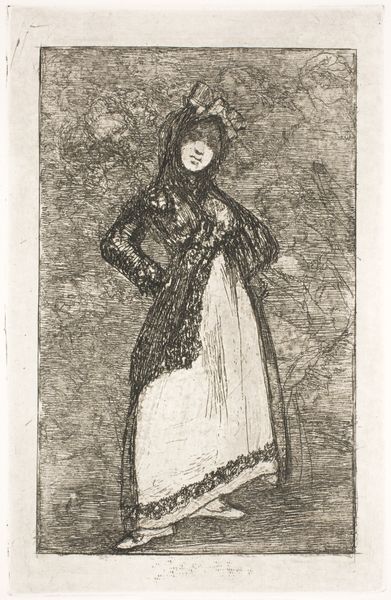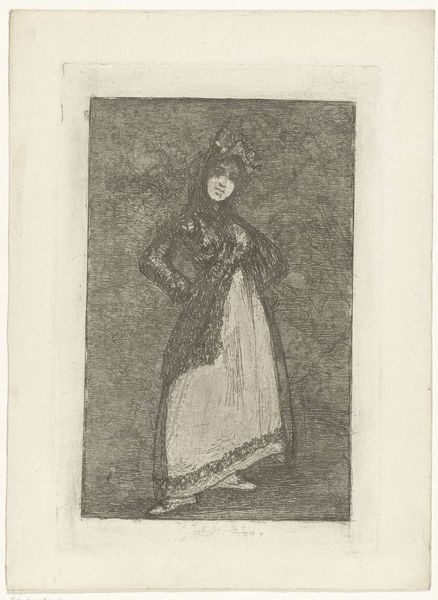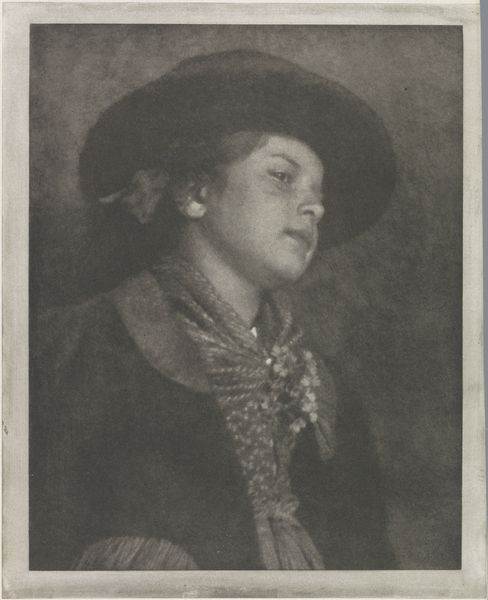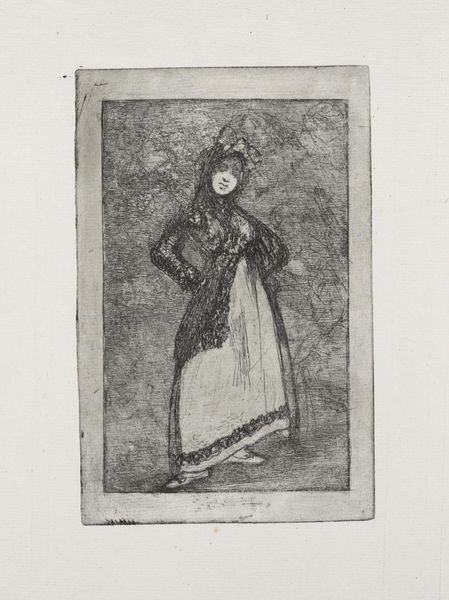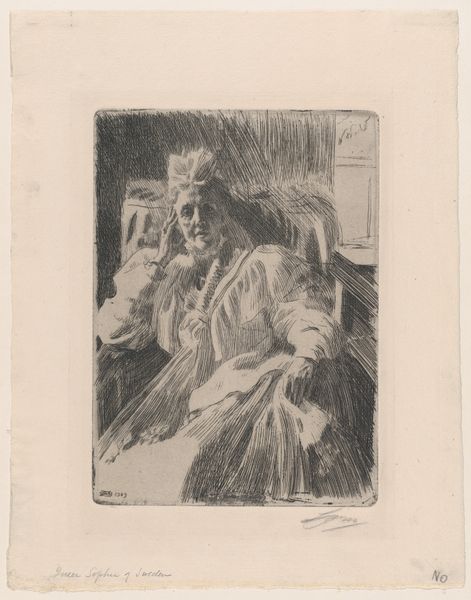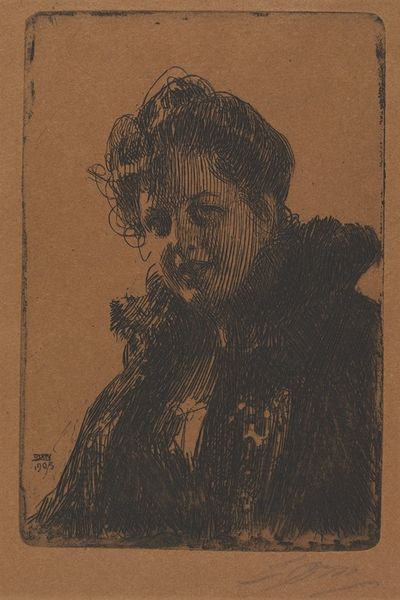
Oxenstierna (Mrs. Aurore Klintberg, née Oxenstierna, Whole length) 1909
0:00
0:00
Dimensions: 245 × 175 mm (image/plate); 323 × 213 mm (sheet)
Copyright: Public Domain
Curator: Standing before us is Anders Zorn's 1909 etching, "Oxenstierna (Mrs. Aurore Klintberg, née Oxenstierna, Whole length)," currently held at The Art Institute of Chicago. What’s your initial read of it? Editor: There's a weightiness to this portrait, isn't there? Even with the delicate etching lines, she has a somber intensity. It is an evocation of the subject's status and bearing more than conveying anything particular of their likeness. Curator: It's important to acknowledge that portraits during this time became markers of social and political standing. This image of Aurore Klintberg reinforces the established position of the Oxenstierna family. Zorn, however, wasn’t merely producing a representational record. Editor: Certainly not. Zorn uses etching, a relatively accessible and reproducible medium, to portray a woman from a rarefied sphere. What statement is made when you democratize the likeness of an aristocrat? How does this potentially subvert notions of elitism? Curator: I agree; consider the societal expectations imposed on women of that era, particularly those of noble lineage. What role did they have to perform, and how were their identities circumscribed by those demands? She stands firmly; the dark coloring provides gravitas. Yet her gaze is level, engaging directly with the viewer. There is no demureness in her posture. Editor: Indeed, we need to contextualize this portrayal with contemporary notions of gender and power. This etching isn’t simply a depiction of a woman but an exploration of how she negotiates her role within a complex social structure. It may give us insights into the construction, perpetuation, and, possibly, subtle contestation of female identity within aristocratic circles at the beginning of the twentieth century. Curator: Absolutely, viewing art from this era requires looking at these intersections of class, gender, and the political dimensions of portraiture. It brings another layer of context to Mrs. Oxenstierna. Editor: In art, history echoes and asks ever-evolving questions of the present, making even an etching like this a starting point for conversations about identity, power, and representation.
Comments
No comments
Be the first to comment and join the conversation on the ultimate creative platform.
